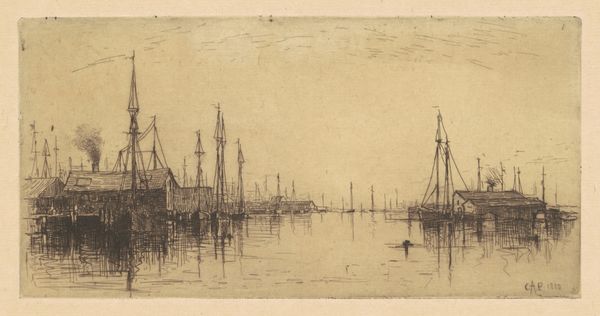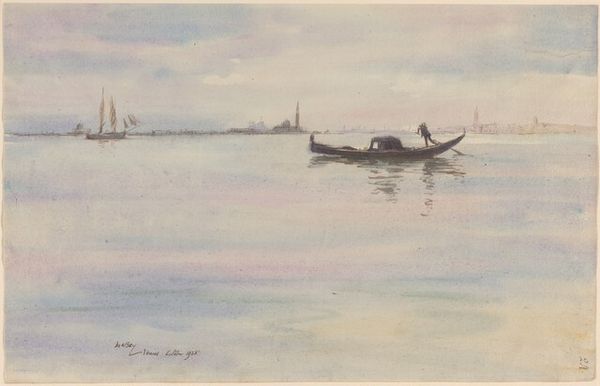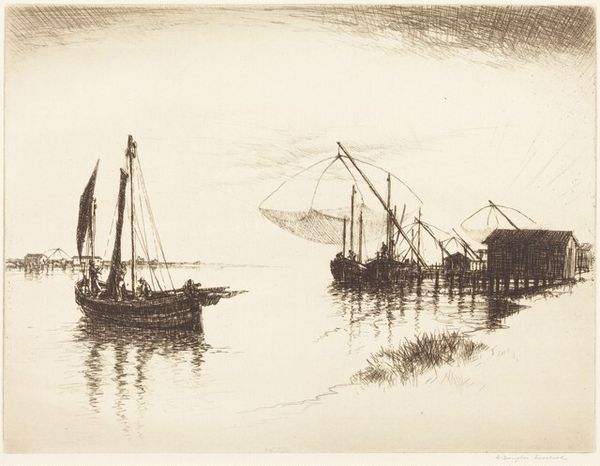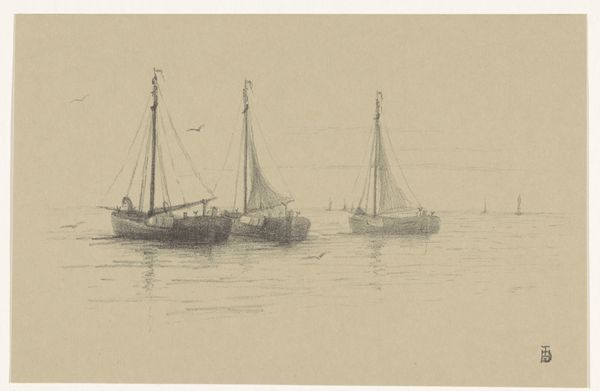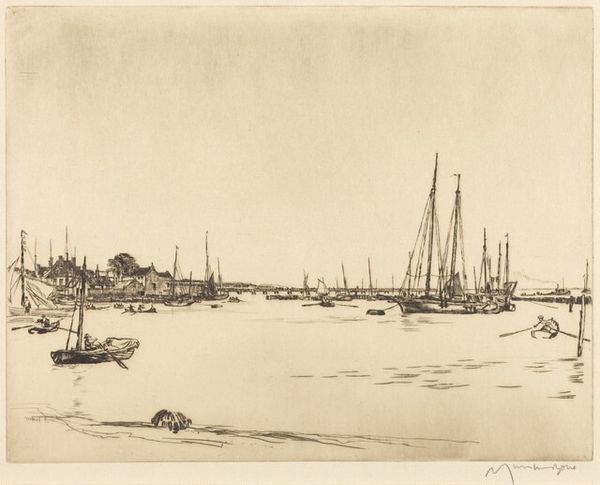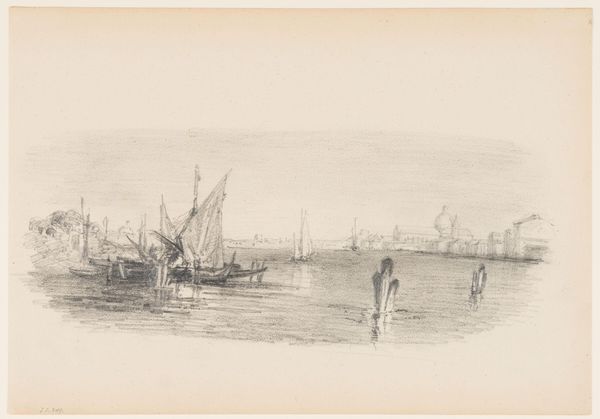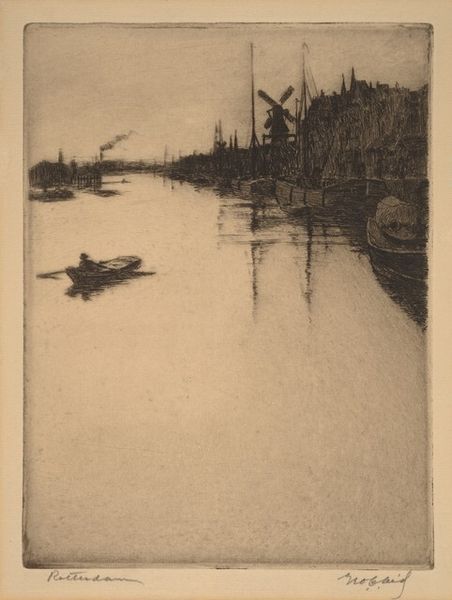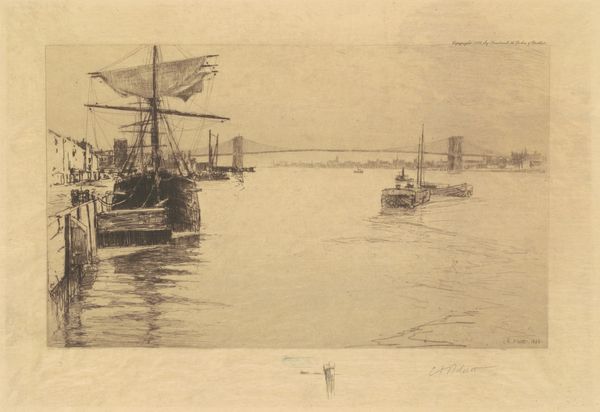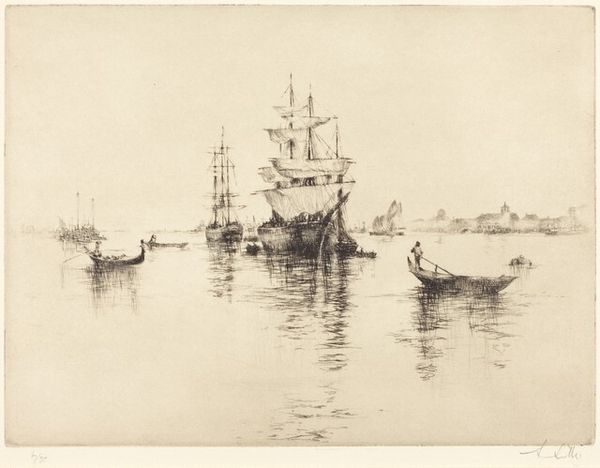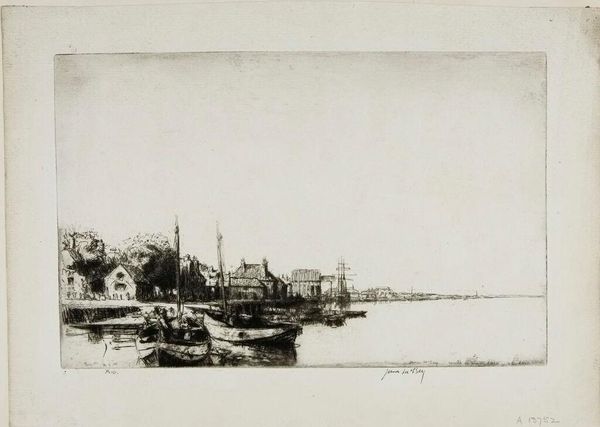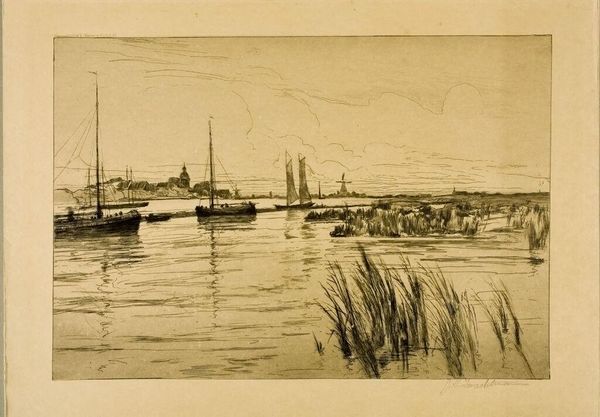
print, etching
# print
#
etching
#
landscape
#
cityscape
#
realism
Copyright: National Gallery of Art: CC0 1.0
Curator: Looking at this, I feel an incredible sense of stillness, almost meditative. The light seems to bleed into everything. Editor: Indeed. We are currently observing Earl Stetson Crawford’s etching, "Port of Tunis, Twilight," completed in 1928. Crawford employs a refined etching technique to present this cityscape. Curator: The etching feels like a memory itself, doesn’t it? Ports often signify departure and arrival, but this image emphasizes something in between, a transient moment suspended in time. Editor: Absolutely. Consider the linear precision Crawford achieves. Notice how he uses closely packed lines to define the textures of the larger boat on the left and contrasts it with the sparser lines used to depict the tranquil water. The tonal variation from light to dark organizes the pictorial space into distinct horizontal bands. Curator: The three figures in the small boat in the foreground feel iconic, almost like the three Marys approaching the sepulcher, or travelers crossing the river Styx. There is a distinct air of expectancy. What are they searching for? What has already happened? Editor: What intrigues me is how the realism of the scene blends with abstract structural elements. Observe how the masts create a series of vertical lines that interplay with the horizontal shoreline and the flat plane of water. It is almost a visual equation, an exercise in balancing line, form, and space. Curator: It evokes that bittersweet feeling when the day yields to night, suggesting transitions of faith and circumstance. In the collective consciousness, water often symbolizes unconsciousness; these figures may well be crossing thresholds, not just bodies of water. Editor: Looking closely, one can appreciate the level of craft exhibited through the etched lines, how each is meticulously placed to create depth and shadow within this twilight rendering. Curator: It’s a remarkably serene image, encapsulating not just a geographical place but also a state of mind between light and darkness, between worlds. Editor: Yes, the structured rendering contributes a sense of quiet order, lending itself to a symbolic contemplation of a liminal and psychological moment, fixed and timeless.
Comments
No comments
Be the first to comment and join the conversation on the ultimate creative platform.
